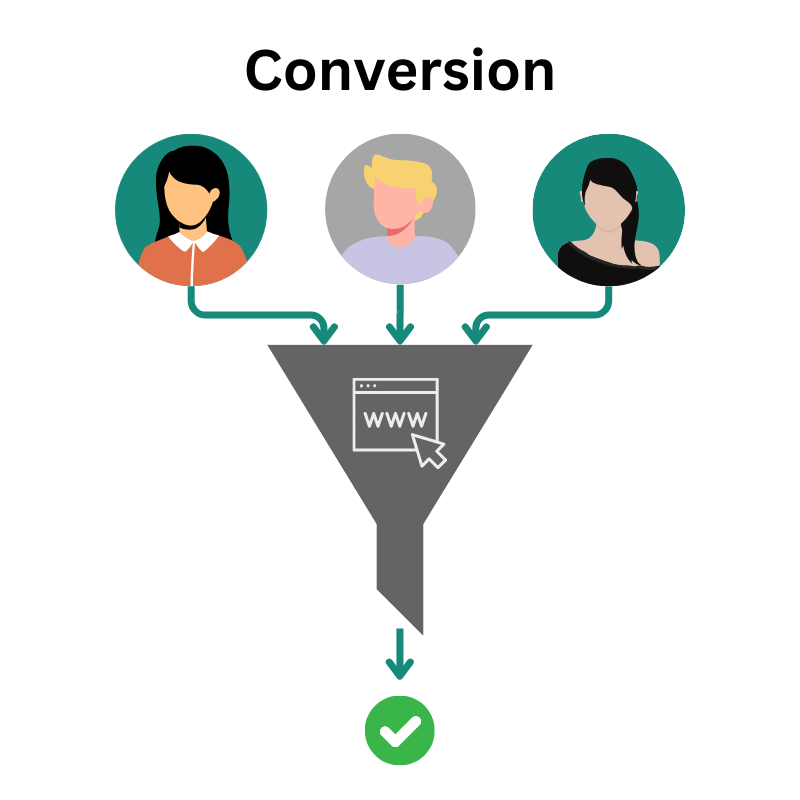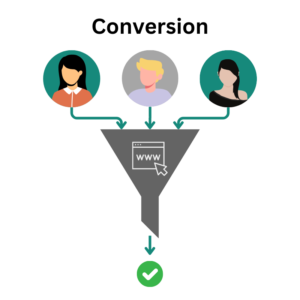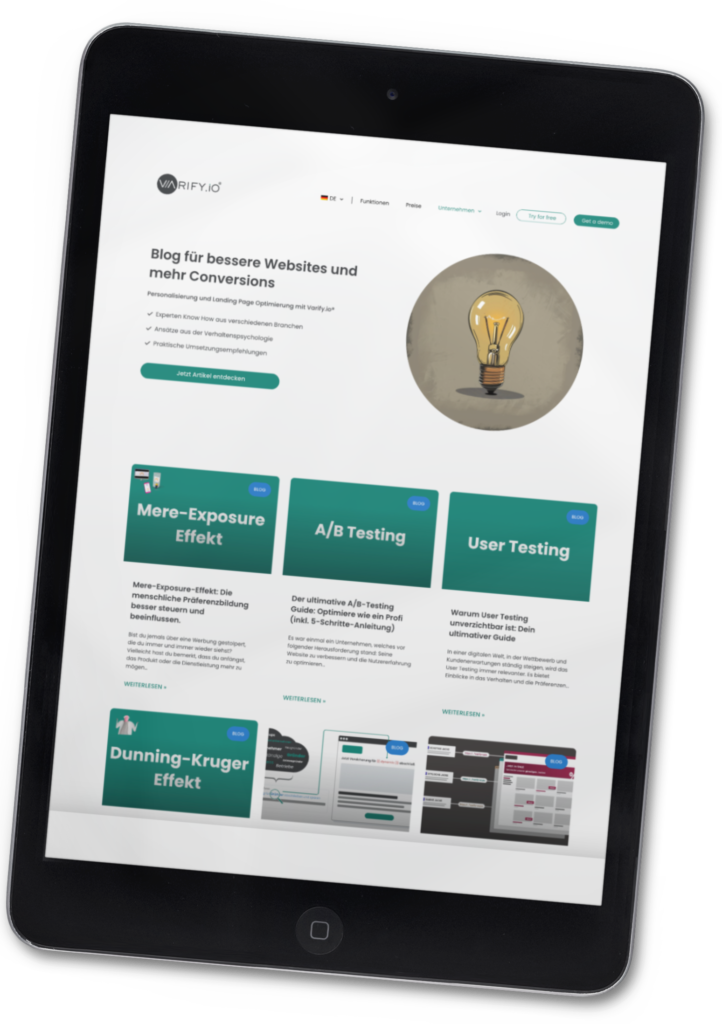
Without conversions, your website is like a shop window without buyers. With conversions, it becomes a high-turnover store!
Read on to understand exactly what a conversion is and how to calculate the conversion rate

Table of contents
What is a conversion?
In online marketing, a conversion is the desired action that a visitor performs on a website or in an app, such as making a purchase, filling out a form or signing up for a newsletter. This action is considered a success as it represents the goal of a marketing measure or website. The conversion rate measures how many visitors actually carry out a conversion and is therefore one of the most important key figures for monitoring the success of online marketing campaigns.
Examples of conversions
Conversions can take many forms, depending on the goals you are pursuing with your website. Here are some common examples of conversions:
Purchase of a product
Adding products to the shopping cart
Subscribe to the newsletter
Download an e-book or white paper
Filling out a contact form
Register for a webinar
Request for a demo
Sharing content on social media
These actions show the interest and engagement of visitors in your offer. Each of these conversions is a step towards achieving your business goals, be it increasing sales, lead generation or brand awareness.
What is the conversion rate?
The conversion rate is a key performance indicator in online marketing that measures the relationship between the number of conversions and the total number of visitors to your website. It shows you how effective your website is at leading visitors to a desired action.
Calculation of the conversion rate
The calculation is straightforward and is performed using the following formula:

Step-by-step explanation:
1. determine the number of conversions: Count how many visitors have carried out the desired action (e.g. purchases, registrations, downloads).
2. determine the number of visitors: Determine the total number of visitors to your website in the period under consideration.
3. apply the formula: Divide the number of conversions by the number of visitors and multiply the result by 100 to get a percentage.
Sample calculation:
Suppose your website had 1.000 visitors, and of these have 50 visitors purchased a product.

This means that 5 % of your visitors have become customers.
Conversion rate calculator:
Your conversion rate: 5.00%
Why is the conversion rate so important?
Increased efficiency: A higher conversion rate means that you get more out of your existing traffic without having to spend extra money on advertising.
Cost reduction: By optimizing the conversion rate, you can reduce the cost per acquisition (CPA).
Growth potential: Even small improvements in the conversion rate can lead to significant increases in sales.
Is your conversion rate good?
There is no general answer as to whether your conversion rate is good. It is heavily dependent on various factors and should always be considered in the context of your individual business model. What is an excellent rate for one company may only be average for another.
Factors that influence the conversion rate
Industry and market segment: Different industries have different average conversion rates. The values are often different in e-commerce than in the B2B or service sector.
Type of conversion: A simple newsletter entry will generally have a higher conversion rate than a cost-intensive product purchase.
Target group: The needs and behavior of your target group significantly influence the likelihood of a conversion.
Traffic source: Visitors from organic search results may convert differently than those from paid ads or social media.
Offer and pricing: High-priced products or services can lead to lower conversion rates, as the purchase decision requires more thought.
Focus on continuous conversion rate optimization
Instead of focusing too much on whether your conversion rate is "good" or "bad", you should focus on continuous conversion rate optimization. By regularly testing, analyzing and adjusting, you can constantly improve your rate, regardless of the initial value.
The conversion rate is a tool for measuring the success of your marketing measures and identifying optimization potential. It should be viewed as a dynamic key figure that can be positively influenced by targeted conversion rate optimization.
Conclusion: Your key to success
The terms conversion and conversion rate are key elements in online marketing and crucial to the success of your digital business. By understanding what a conversion is and how to calculate the conversion rate, you will gain valuable insights into the behavior of your visitors and the effectiveness of your website.
It is important to realize that the conversion rate is a dynamic metric that is influenced by many factors, such as industry, target group and type of conversion. Instead of concentrating solely on the absolute value, you should focus on continuous improvement. Through targeted measures, you can convert your visitors into customers more effectively and thus achieve your business goals.

